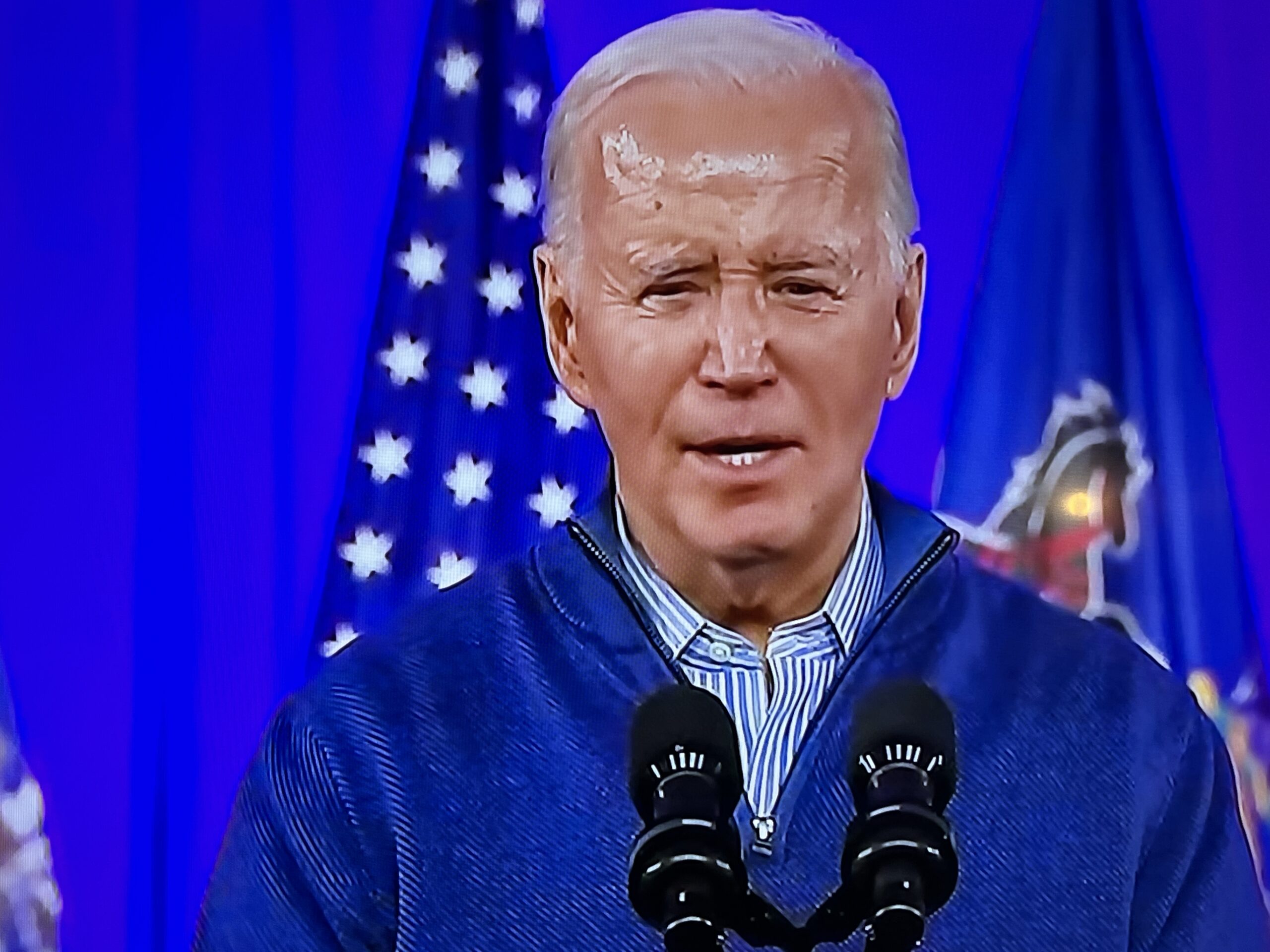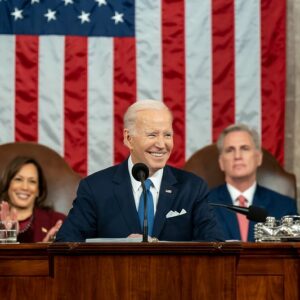Biden Stumbles In Delco Campaign Speech

President Joe Biden took a victory lap at Strath Haven Middle School in Nether Providence Township on Friday after his Thursday night State of the Union speech.
While pundits have described Biden’s speech as “fiery” and “angry,” the 81-year-old Pennsylvania native was more subdued in front of the Delaware County audience. Biden’s local appearance also contrasted with his more focused and on-point performance in Washington, D.C. On Friday, he reverted to form, losing track of his thoughts and misspeaking several times.
Some of Biden’s difficult-to-parse remarks included, “We added more to the national debt than any president in his term in all of history;” and, “Pennsylvania, I have a message for you: Send me to Congress!”
But the Biden-friendly audience, which included many local politicians, cheered and applauded nonetheless, even throwing in a chant of “Four more years!”
Another key difference in his Delco speech was that Biden attacked his likely GOP opponent, Donald Trump, by name rather than referring to him as “my predecessor.”
“Folks, our freedoms really are on the ballot this November. Donald Trump and the MAGA Republicans are trying to take away our freedoms,” Biden said. “That’s not an exaggeration. Well, guess what? We will not let him.”
Biden hopes the U.S. Supreme Court decision overturning Roe v. Wade will again spur Democrats to vote.
“Those bragging about overturning Roe v. Wade have no clue about the power of women in America,” said Biden.
Biden touted the U.S. economy as “the envy of the world,” with “15 million new jobs in just three years” and unemployment at a “50-year low” with “800,000 new manufacturing jobs and counting.”
“Wages are up, and inflation is coming down,” he said. “Inflation’s dropped from 9 percent to 3 percent.”
He called for “the wealthy” and corporations to pay more taxes. He would set the corporate tax rate at 21 percent. “No billionaire should pay a lower tax than a teacher, sanitation worker, or nurse.”
He would set the tax rate at 25 percent for billionaires to raise $500,000 billion over the next 10 years, which the government would use to cut the deficit and “provide childcare.”
He said he’s fighting the pharmaceutical industry to lower the price of drugs and mentioned lowering the price of insulin to $35 a month for senior citizens, a move Trump made in his presidency. Biden promised he would lower the price of medications for all Americans.
Biden proposed giving Americans $400 a month tax credit toward their mortgage if it’s their first home or they’re moving to “a larger place.”
“We’re cracking down on big landlords who are price-fixing and driving up rents,” he said, adding Congress should pass his plan to “bring those rents down.”
“We’ve got $359 billion passed for climate change,” said Biden.
“We beat the NRA when I signed the most significant gun safety law in 30 years. Now, we have to beat the NRA again. I’m demanding a ban on assault weapons and high-capacity magazines,” Biden said.
Biden told his Delco audience his goals are the same as they were in 2020: to grow the middle class, to “restore the soul of America,” and to unite the country. Republican critics were quick to respond that his State of the Union speech a day earlier was one of the most partisan and divisive in history.
On the street outside Strath Haven Middle School, pro-Palestinian protesters picketed, chanting “Genocide Joe has got to go,” among other slogans.




